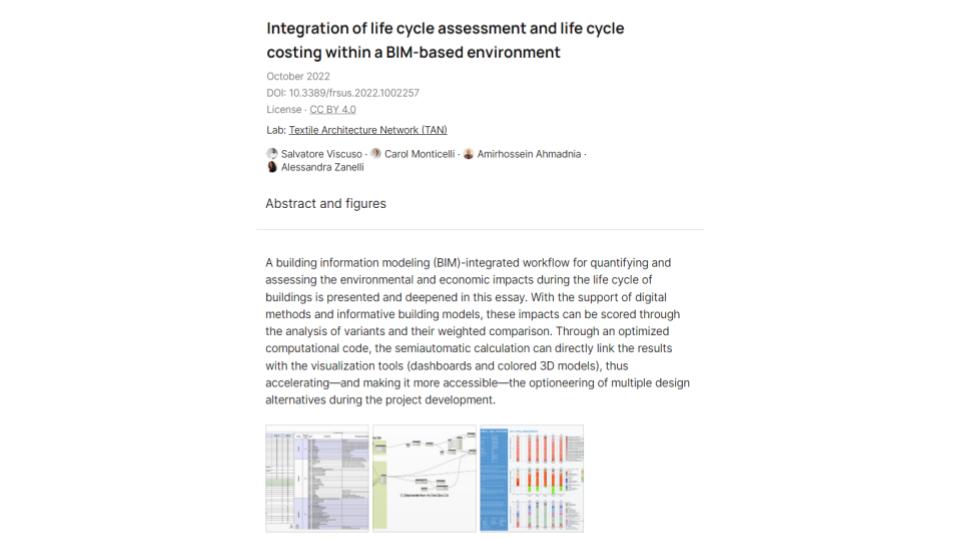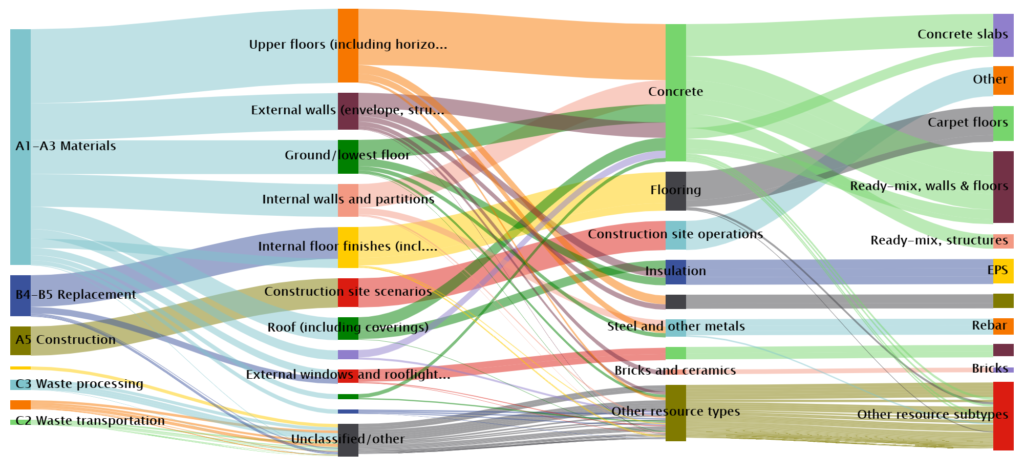
Introduction
Building Information Modeling (BIM) workflows can support Life Cycle Assessment (LCA) by providing a centralized digital repository of building data and design information. BIM can facilitate the collection and management of data related to material sourcing, energy use, and environmental impact throughout a building’s lifecycle. This set of information is relevant to perform LCA analysis, which is a comprehensive evaluation of a building’s environmental impact over its entire lifecycle, including materials sourcing, construction, operation, maintenance, renovation, and eventual demolition. BIM workflows can help architects, engineers, and contractors make informed decisions that prioritize sustainability and minimize the environmental impact of the built environment.
Key words: building information modeling (BIM); life cycle assessment (LCA); workflow; Integrated methodology; challenges and opportunities.
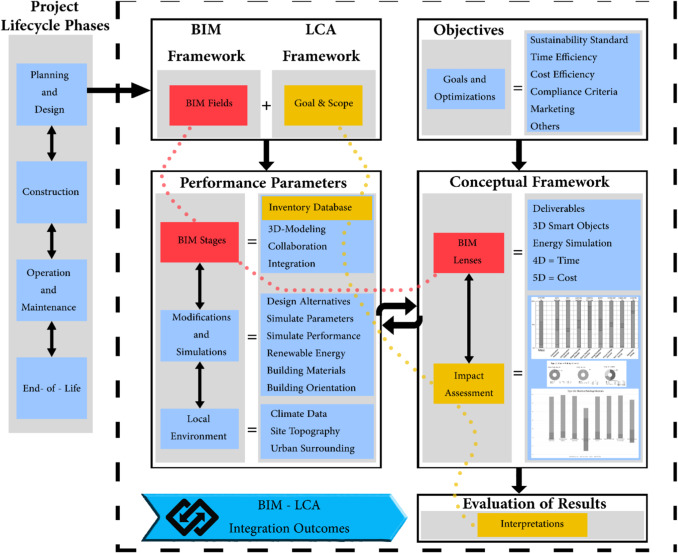
( Resource: Integration of BIM and LCA: Evaluating the environmental impacts of building materials at an early stage of designing a typical office building.)
Research Aim
This investigation aim to conduct review of the current methods of BIM integration in LCA. Some key issues will be clarified in this investigation:
- What is BIM-integrated LCA ?
- What applications of BIM-integrated LCA are?
- Which data and tools support is needed to complete the LCA analysis of a project in an ideal state?
- What is the current mainstream of BIM for LCA workflow?
- Which are the most demanding and time-consuming link in the whole process?
When these key issues are clarified, it is possible for people to propose effective improvement directions.
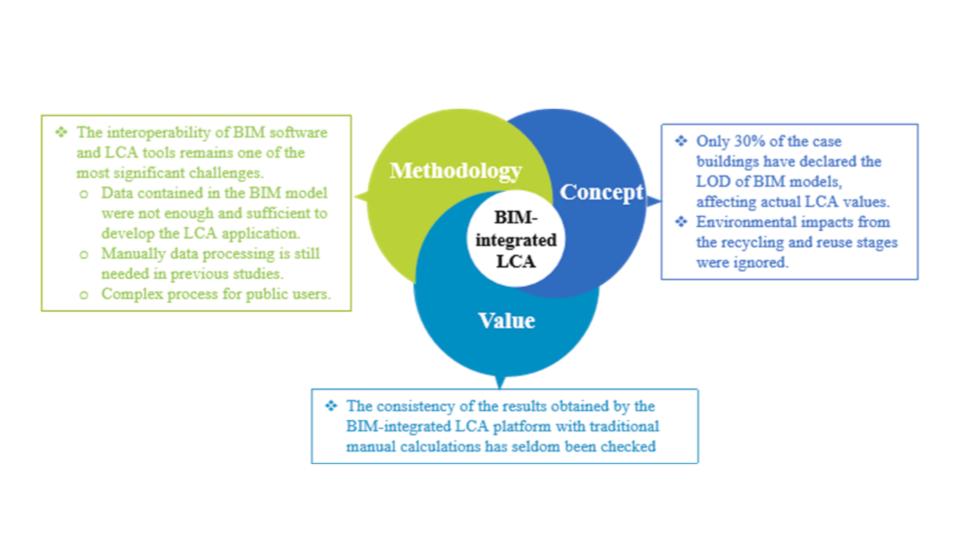
(Resource: A systematic review of the integration of building information modeling into life cycle assessment.)
Research methods
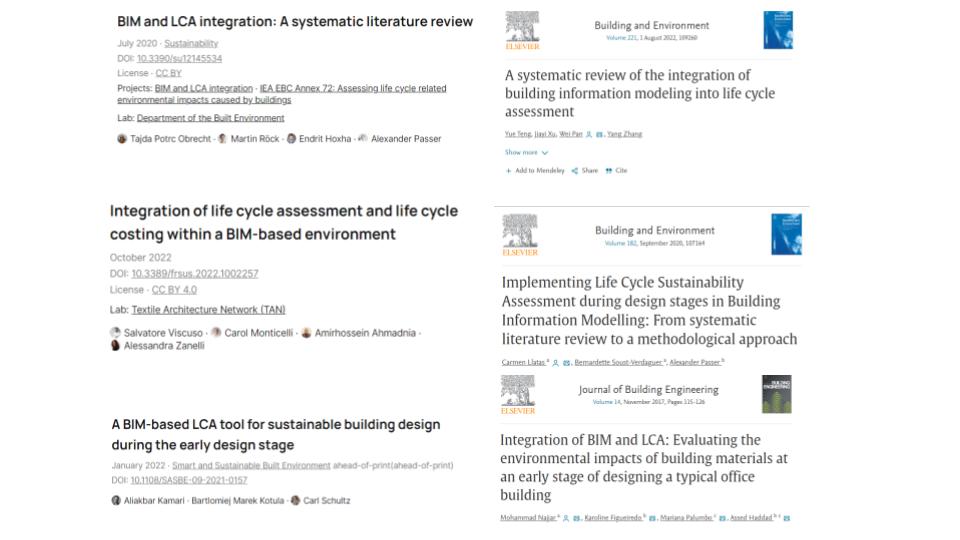
The preliminary research stage is based in literature review of relevant thesis and publications to establish a systematic understanding of the application of BIM and LCA within a common basis of work.
Interview Expert

Salvatore Viscuso, MS in Architecture, Ph.D. in Building Technology, is currently research fellow at Polytechnic University of Milan. He deepens his knowledge in dry construction methods that use extremely precise components and devices. Recently, he’s engaging in designing, manufacturing and testing lightweight structures that optimize the transport and installation on site.
Podcast Brief
- The most complex challenge facing current BIM application in LCA.
- Which information or data is very important in BIM integrated LCA, and how can this information supports decision-making.
- Practical application of BIM integrated LCA, taking the specific example given by the guest .
Research Questions
- Q1: How does BIM support the development of a life cycle assessment? (general question)
- Q2: In the process of applying BIM in LCA, are there any challenges associated with using BIM in LCA, and if so, how can these challenges be overcome in the future?
- Q3: Can you share a specific project or experience where BIM was used to support LCA, and how it helped to achieve project goals?
- Q4: In practice, how can BIM data be used to inform decisions related to materials selection, energy use, and other environmental factors?
- Q5: The application of architectural LCA requires the establishment of a database with sufficient information up front. For new buildings, this seems to be feasible. But for existing old buildings, it is difficult to do some LCA-related analysis?
- Q6: What are some emerging trends or innovations in the field of BIM and LCA, and how might they impact the industry in the coming years? (Wrap-up question)
Linked Audio?
Conclusion
In this interview, Salvatore Viscuso shared a lot of his relevant experience in BIM. Through in-depth questions, the guest’s detailed answers made the issues clear.
The BIM-integrated LCA workflow starts with the development of a BIM model that includes detailed information about the building’s design, components, and materials. This BIM model is then linked to an LCA software, using the data to evaluate the environmental impact of the building over its entire lifecycle. The results of the LCA analysis are used to optimize the design and construction process to reduce the building’s environmental impact.
Lack of data, the complexity of the BIM and LCA software tools and integration of BIM and LCA data across different software platforms are main challenges for BIM integration in LCA.
Overall, the application of BIM-integrated LCA offers significant potential for reducing the environmental impact of building design and construction. As the use of BIM and LCA connection continues to grow, it is expected that further advances will be made in addressing these challenges, leading to more widespread adoption of this important approach. At the end of the interview, we also looked forward to the future development of BIM in LCA. Some emerging methods, such as machine learning, will hopefully help BIM to integrate more quickly and efficiently in LCA.
